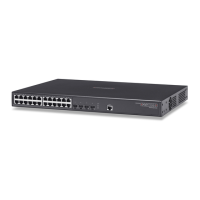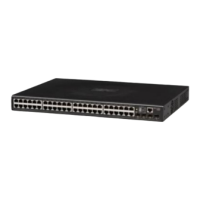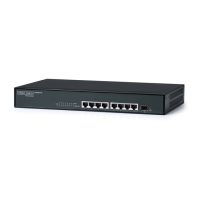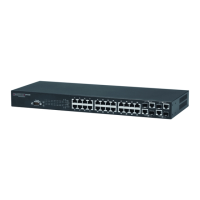Initial Configuration
2-10
2
Configuring Power over Ethernet
The switch’s 24 10/100/1000 Mbps ports support the IEEE 802.3af
Power-over-Ethernet (PoE) standard that enables DC power to be supplied to
attached devices over the wire pairs in the connecting Ethernet cable. Any 802.3af
compliant device attached to a port can directly draw power from the switch over the
Ethernet cable without requiring its own separate power source. This capability gives
network administrators centralized power control for devices such as IP phones and
wireless access points, which translates into greater network availability.
A maximum PoE power budget for the switch (power available to all switch ports)
can be defined so that power can be centrally managed, preventing overload
conditions at the power source. If the power demand from devices connected to the
switch exceeds the power budget setting, the switch uses port power priority
settings to limit the supplied power.
In the example below, the power mainpower maximum allocation CLI command
is used to set the PoE power budget for the switch. (Range: 37 - 180 watts). If
devices connected to the switch require more power than the switch budget, the port
power priority settings are used to control the supplied power. See “Setting a Switch
Power Budget” on page 33-129 for details.
PoE is enabled for all ports by default. Power can be disabled for a port by using the
no form of the power inline CLI command, as shown in the example below.
Console(config)#power mainpower maximum allocation 180 4-160
Console(config)#
Console(config)#interface ethernet 1/2 4-135
Console(config-if)#no power inline 4-162
Console(config-if)#

